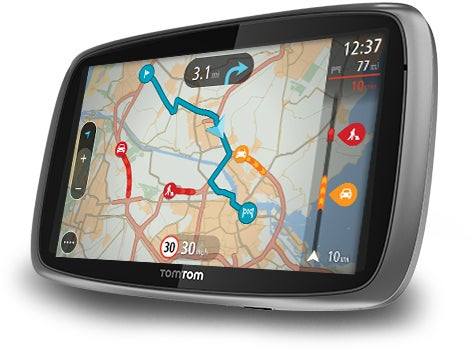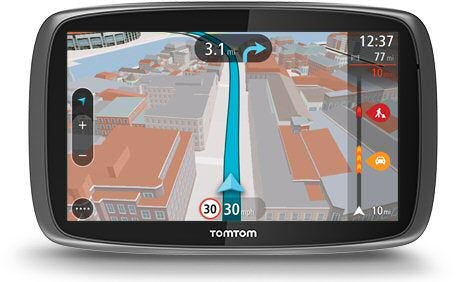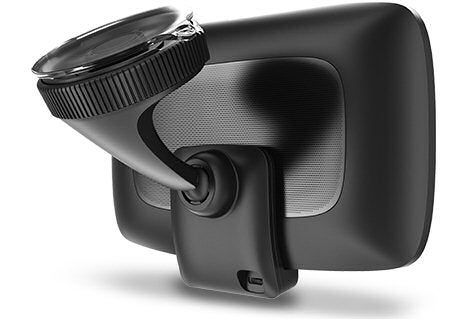TomTom GO 6000 Review
TomTom GO 6000
TomTom's premium sat-nav is very hard to fault

Sections
- Page 1 TomTom GO 6000 Review
- Page 2 New Menu System, Navigation and Verdict Review
Verdict
Pros
- Lifetime TomTom traffic with built-in mobile data
- Lifetime European map updates
- Redesigned menu interface
Cons
- Misses some features from previous premium TomToms
- LIVE services only include traffic and speed camera updates
- Speed camera updates still require an annual subscription
Key Specifications
- Review Price: £299.99
- 6-inch widescreen
- Maps for 45 European countries with lifetime updates
- Lifetime TomTom Traffic via built-in mobile data
- Radically redesigned menu system
- Unified address and points of interest keyword search
What is the TomTom GO 6000?
The GO 6000 is TomTom’s new flagship sat-nav. Like the TomTom GO 500 review from last month, it incorporates a radical new interface that is nothing like previous generations. The streamlining has meant the omission of quite a few features in the name of reduced clutter and improved usability, but the GO 6000 has a few aces up its sleeves to compensate.

TomTom GO 6000: Features
It’s clear that standalone sat-nav manufacturers are feeling the pressure from increasingly capable smartphones, with Mio even refocusing its attention towards alternative GPS-enabled devices like the Mio MiVue 388 Drive Recorder we reviewed recently and fitness products. The GO 6000 presents a two-pronged defence. Not only does it offer a 6-inch touch screen, even larger than the 5-inch displays that have become the norm, and beyond any pocket-friendly smartphone, it also provides TomTom’s excellent Traffic service for the lifetime of the device.
Unlike the GO 500, however, the GO 6000 also includes built-in wireless data, so you don’t need to partner it with a smartphone and feed off the latter’s data plan to provide this information. Other than the built-in data, however, the GO 6000 is very similar to the GO 500. It comes with maps for 45 European countries, for which lifetime updates are also included, so you will never have to pay for a new map.
One thing that isn’t included for the life of the product is speed camera locations, however. You get a three-month trial of service, and then have to fork out £19.99 a year. This is still less than the TomTom LIVE Services used to cost annually, though, and the warnings won’t stop working if your subscription lapses. You just won’t be informed of any new fixed or mobile camera placements.
Related: 5 Best Dash Cams right now
TomTom GO 6000: Design
The GO 6000 looks quite different to the previous generation. Where models like the GO LIVE 1005 were rather rectangular, the GO 6000 returns to the slightly more curvilinear styling of the GO 750 and before, albeit with a simpler, less fussy appearance. The windscreen mount has had a less radical improvement. It still uses magnetism to keep the sat-nav in place, but the contacts are now fixed.
The power cable now uses a micro USB connection to attach to the mount, and the sat-nav itself incorporates the same connection. So if your cable goes missing or you need power from elsewhere, the cable from many mobile phones will suffice. The car power adapter is also separate from the cable, using regular USB for attachment, so you won’t need a separate cable for updating the firmware or maps on the device.
The new look signals an even more radical change when you turn the device on. TomTom has been perfecting an icon-driven interface ever since we have been reviewing the company’s products, although the previous generation rationalised this quite effectively.
The menu is so different with the GO 6000 and 500 that you’d be forgiven for thinking this was a product from an entirely new manufacturer. It takes a little while to get used to the fact that you use an icon rather than a tap anywhere on the screen to call up the menu, but after that it’s extremely intuitive.



